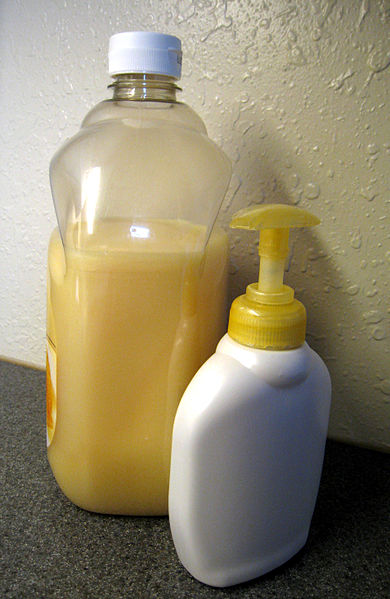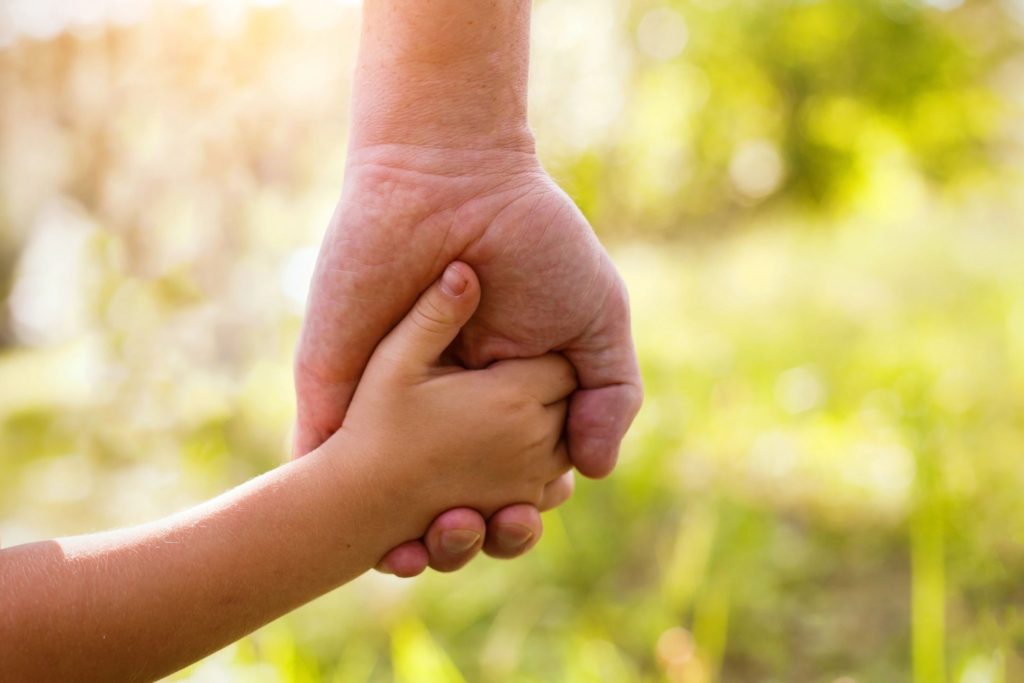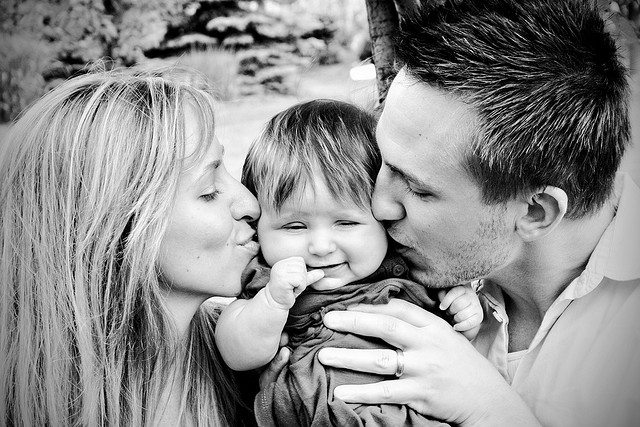Before I go ahead with the tips, let me give you the backstory.
My husband and I have recently become parents-of-three. The new addition of the family is barely a year old and she is already as beautiful as her two older sisters who are six and three years old. Pretty as these packages may come, they really are high maintenance no matter how hard we try to buy the humbler purchase. After the recession, we have been told (I bet you have been as well) that it is expensive to raise a child nowadays let alone two more who follow in the wake of technological advancement. Although birth control is easily available, it is challenging when the head-of-the-house works abroad. My husband is a seafarer and he is away for 11 months the most and stays with us for three to six months. The story of my life.
In contrast to the endlessly hectic albeit exciting life that we have now, I was raised in a very different setup. My mother is a single parent and although she faced her own trivialities as a parent, it wasn’t as difficult as it is now. She only had me and my sister, both spaced very well with a seven-year gap and we were raised in a time when we can borrow salt from the neighbors. No kidding. That is metaphorical and literal. A dollar or two yielded a happy grocery cart, playtime lent more sensory experience because toys didn’t matter much, and the food wasn’t a problem with organic produce from the garden or fresh from the sea.
My husband grew up around the same time with the same privileges. Though we’ve had our fair share of taxing childhood, we couldn’t compare it to the financial and material demands of the now. Every time we emptied our wallets, it’s as if the presidents on the bills would come out with a face palm. If not paper money then the card that we use to pay for grocery would come back to our hands feeling lighter after every swipe.
So how did we manage the transition? With a lot of trial and error (while pulling the hairs of our head). The following tips are tried and tested (by us and a few friends of ours). In no particular order, you may:
Save on bath time. The Washington Post published an online article early this year, which woke up a few cribs. “Why You Should Stop Giving Your Kid a Bath Every Night” drew quite an attention from parents concerned about their children having skin allergies, irritation, and the likes. Is there such a thing as too much bath? Yes. Rule of the thumb, too much of something is bad enough. While the post focuses on households in countries visited by winter, tropical families like us, agree as well. If you come to think about it, we should be bathing three to four times a day in this crazy humidity. But we don’t because firstly, let’s save water. Secondly, we are very scrupulous with products applied on our kids. Thirdly, let’s save water and save money on that then save on products and save money on that, too.
What we did was 1.) have the kids take a bath once in the day. Preferably after lunch, when all the playing and running is over and done with and we are ready to send them on a nap. We give them a couple of minutes to slow down or else we put them in a tub full of toys for continued play. By the time we give them a bath, they will be very tired and sleepy. So as to keep them tidy until dinner, we minimize their playtime to reading and/or activities with less movement. In the evening when they are ready to sleep, we simply guide them to wash their face, their “baby parts”, (which will grow up to be “lady parts”) brush their teeth, and change into new sets of pajamas. Having them change into fresh sleeping clothes will encourage a feeling of cleanliness as if they took a shower before bedtime.

“Refill Soap” by Dvorty Girl on Wikimedia
On products, we 2.) cut down use by diluting their baby bath with water and putting the contents into a foaming dispenser. This way, whatever harmful chemicals may be lurking in their body or bubble bath, we’ve weakened them. In 2012, Johnson and Johnson confessed that their products had hidden formaldehyde under “fragrance” chemicals like “DMDM hydantoin.” I can only imagine what chemicals we are exposing our kids to. While going au naturale is smiled upon nowadays, the formulas offered by organic products can only do so much. Children of the new generation seem to sweat a lot and smell more. So why not stick to a mainstream product of your (careful) choice plus water into a foaming dispenser. The dispenser can be bought at a dollar store, which is very helpful in distributing the soapiness and makes the mixture last a while longer than the pure undiluted soap. On her fifth month, our youngest child could share the same soap with her sisters so we didn’t have to spend any more on another infant soap. This formula helped us save a lot from bath time expenses alone.
Establish trust through medicine time. We are not alone in our battles, read Parents online. It says that parents have to jump through hoops if it came to giving medication to children. Not to mention the civil war over vitamins because whatever it is that came out of a medicine-bottle-looking “trap”, there’s going to be some struggle. I believe we can all agree with Parents saying that kids are either too sick to take the medication, or they don’t want to be pushed around to take anything strange when they are sick or come on! It’s not like we are handing them candies.
There are sites that would agree to the intention of our approach. It is important to let our children understand why they need the medicine. It is also significant if we showed our sincere involvement in their betterment. But it is different for every family, like for parents with epileptic children who have to take four kinds of medicine in a day. That is a bit traumatic for parents and child alike. My husband and I must have hit some quota on medicine time wrestling, it seems like a breeze now. So take it from us. Taste the medicine in front of your kids. What better way to establish trust than setting an example to your children? Taste it, explain it, be honest about it and then assure your kids what it will do to their body.
Both our six-year-old and three-year-old had Primary Complex. PC is another name for Tuberculosis in children, which thankfully is not contagious. The medication was a tiresome regimen. While the eldest had a fully diagnosed PC, our middle one showed signs of it WITH pneumonia. So one had to be in full PC regimen and the other under a similar prophylaxis plus treatment for pneumonia. We had to wake up to a system of medication before breakfast and then before bedtime. The 6-month schedule involved three main respiratory vitamins; the blood-like Rifampicin, the urine-like Isoniazid, and the vomit-like Pyrazinamide.
Related:
- WHO: Tuberculosis Treatment in Children
- Three Important Things You Need to Know About Primary Complex (and Other Treatment Tips)
The dosage varied on their age and weight, so the bigger one gets more (and the bigger one is usually the one with a lot of questions). Can you imagine how many times we’ve had a discussion over “Yes, it looks like urine but see, it tastes of banana. Minions love banana.” Or “Do you want to be a vampire like Mavis (sometimes Draculaura of Monster High)? Well, have a cup of strawberry blood!” But then we’ve already built a foundation on their confidence by letting them know that even we, as parents have to take medicines for our own ailments. In fact, they too, are involved when we are sick. We let them nurse us in return. In doing so, the concept of treatment is no longer strange to them. Well, the hospital and being hospitalized is another story.
Saving on spare change: leading by example. The reason why I had to share about my mother being a single parent is essential in this aspect. We lived from hand-to-mouth if I may say so. My mother somehow pushed me to save, to put any spare change from purchases into a tin can. In less than a year, the banked coins amounted to something. I was really excited about it and so was my mom. The feeling didn’t last long though when my mother needed extra, she wouldn’t tell me where she will use it but she promised to pay it back. This was the first promise she broke.

“Piggy Bank on Pennies” by Ken Teegardin on Wikimedia
I do not hold anything against my mother. But in retrospect, this was a moment of epiphany in my childhood. It was a core memory; the first time I learned about debt and debt unpaid. The lesson of saving was lost on me and was replaced by a decisive “So it’s okay to borrow money and not pay it or delay it.” This affected the way I handled money and how I saw money as I eventually grew up. Now I know what they mean when they say parents are the most important and indispensable teachers of their children. Taking this into consideration and my consequential financial struggle with myself, my husband and I devised a savings plan that will work for us and the children.
While ours maybe more complex into-the-bank, into-mutual-fund, into-investments discipline, our children’s didn’t have to be. It is as simple as giving them a personal wallet, a personal piggy bank for tangible goal funds, and a little orientation on the money. We speak to them about money from the tooth fairy, godparents, grandparents in a straightforward manner children can relate to; money is not evil if not given to or taken from evil. We don’t treat money as something that leads our lives and in fact leave paper bills and coins around the house to allow them to live with the scenario. The more you hide anything from them, the more they will think a bigger deal is going on. A simple gesture as putting in the smallest cent to the biggest denomination in the paper will motivate them to mirror your actions. Taking my own learning experience to consideration, I avoid how my mother approached that situation. There are many ways and reasons in teaching them about money matters at a young age that are readily available online.
You can call it co-sleeping, bed-sharing, or sleep-sharing. Whatever you call it, that’s what it is and that’s what we do. Although there is a discussion over the functional differences between these terminologies, the concept of sharing a personal space with your child is relatively similar. The internet can give you varied reasons coming from a variety of parents for practicing this crucial ritual in raising children but from where my husband and I come from, it is the norm. Like every other website, we can tell you that it offers the same advantages and disadvantages.
Related: Babycentre: Co-sleeping and Safety
Thankfully we are quite accustomed to it that the drawbacks are hardly the problem. Except for the fact that my husband and I are less likely to have “sexy time” with the kids in the same bed and the occasional “Wish the kids weren’t here so we can watch this movie,” everything else is bearable. For us, being with them from the day they were born to growing toddlers, we have welcomed the challenges of restless moments (when you are tired and then comes a little finger in your nose or your eye), crying spells (for lack of sleep or excess thereof) and an assortment of gymnastics. When they are closest to us, it is when we can give them the right kind of connection, warmth, and protection, given that the necessary precautions are executed before hitting the sack with the little potatoes. Take note that we also save on power and our own energy since there is only one lamp, one bed, one room.
I have learned, based on my experience that bed-sharing develops a bond between parents and children. This emotional bond is explained in the “attachment theory” according to a research by British developmental psychologist John Bowlby in 1935. Since eventually we are let go from the nest, there is a balance of dependence and independence. My husband and I practice this and when our eldest turned 5, it was then that we introduced independent sleeping. I was raised this way. So while I may have my own family, my sentiment towards my mother is unwavering, where trust and loyalty had been established.
Listen to music together. Quite a number of studies have backed up the benefits of music to human well-being. It must be really working on us because we feel very good about having music anywhere we go. When I met my husband, I was thankful that he loved music as much as I did, music helped us through our individual lives and even more so when we were together. All the more when we had kids. We have speakers all over the house to accompany our activities of daily living, our road trips would not be complete unless the music is turned on and we always take the time to appreciate the new releases from around the world. Music has become a lifeblood that flows through each of our souls at home. It has helped ease tension, contradicting aura, and frayed nerves
As it is beneficial to older people, music helps ignite our children’s areas of development; intellectual, social, emotional, motor, language and overall literacy. Listening together not only synchronizes therapy for each family member, it also becomes an intimate instance that highlights good memories. My childhood memories, for example, were linked to harmonious Christmas music, which reminds me of a warm fuzzy feeling and a richly cinnamon-scented room brimming with cousins for the holidays. Since it is a sensory material, it can be a helpful tool in calming children down. Music can be suggested to certain schedules that will tell the children when it is time to wake up, time for a nap, and time for bed. What do you save up? If you intend to save on the bill, use a Bluetooth speaker that consumes less energy, or other gadgets that do just that. You also save up on hours and hours of tantrum relay.
If you ask me…
These tips are based on our lifestyle and the uniqueness that is our household. They may apply to you or not but it is advisable to consult family and friends what will best suit you. So far, it worked for us and so far, this is just part one of a long list of additional tried and tested strategies for parenthood.

